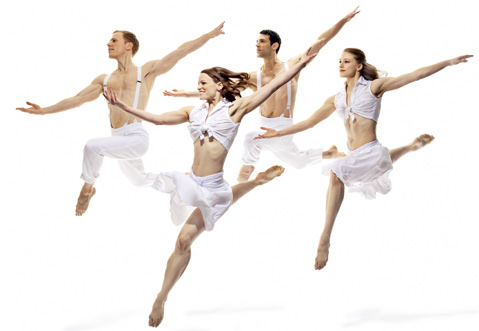Paul Taylor Dance Company to Perform at the Granada
The Modern-Dance Legend Discusses His Career

At 80 years old, he’s the last living member of the generation that firmly established modern dance as an American art form. He’s one of the most prolific choreographers ever, having created 133 dances to date, and he’s known for making works that tackle everything from romantic love and the beauty of nature to religious evangelism, war, and incest. To the dance world—even to those who dislike his work—Paul Taylor is a living legend. Yet in real life, he’s a humble and very private person who shies away from public appearances and spends most of his time at his shingled house on Long Island, where he enjoys collecting bugs and tries to get to bed by 6 p.m. When he does speak to the press, he tends to underplay his remarkable and genre-defining career. I spoke to him by phone from his home last week in advance of his company’s November 17 appearance at the Granada Theatre.
Last time we spoke in 2006, we talked about the program in terms of a spectrum from darkness to light. How would you characterize this program, “Brief Encounters” (2009), “Dust” (1977), and “Company B” (1991)? I’d say all the works on this program are very mixed—both dark and light. As a matter of fact, a lot of dance writers have said that my works are either dark or they’re light, and that’s not altogether true. They’re mostly a mix.
“Brief Encounters” premiered just last year, so most people in Santa Barbara won’t have seen it yet. Can you tell us a little bit about it? Yes: That’s young people in briefs having quick contacts in a dark and secluded place.
How would you describe “Dust” and “Company B” to people who aren’t familiar with your work? Well “Dust” is about people with infirmities—one has a gimpy arm, for example—and it’s about rising above these restrictions. They don’t let those disabilities stop them. “Company B” is one of my war dances. It’s basically about the people at home trying to stay cheerful with their loved ones overseas.
Last time the New York Times dance critic Alastair Macaulay reviewed “Company B,” he wrote that you “rank among the great war poets.” Yeah, that was nice of him. I’ve done a lot of war dances. With the exception of “Company B,” most of them are intended to be universal. There’s one, “Banquet of Vultures,” that points at the Bush administration. But it doesn’t come out and say so.
For years you’ve worked exclusively with lighting designer Jennifer Tipton and costume designer Santo Loquasto. Why use the same designers for every work, and what is it about those two that has made them indispensable to you? Well, they’re very familiar with my work. They just come to a run-through at the studio, and they know exactly what they want to do, and I usually agree. There’s actually very little interchange of ideas between us. We all seem to be on the same level, and it’s been just wonderful. I enjoy working with them very much, so unless either one of them is not available (and they’re very busy people, I must say), I try to work with them.
You’re up to 133 dances to date—that’s an average of more than two a year. To what do you attribute your consistent output over the course of more than 50 years? Well, a lot of things: financial help, donations, wonderful managers, amazing dancers. And luck—lots of luck. And my, I guess what you might call my addiction to dance.
Tell me a little bit more about that. Oh, well I got bitten by the dance bug when I was in college, fairly late; I think most dancers start earlier. And so I switched universities, and I switched my major from painting to dance at Juilliard, and relatively soon I was employed by a lot of wonderful choreographers as a dancer. Between times I wanted to keep performing, and so I began to make up some dances of my own and got friends to be in them, and it just kind of grew from there.
You mentioned your amazing dancers. Competition to make it into the Paul Taylor Dance Company is obviously fierce. How do you know when you’ve found a dancer you want to work with? Well, a couple of things. I notice their eyes, and I line them up and look at them; sometimes we need a certain height or certain type. And then I ask them to walk—just walk across the room—and that tells me an enormous amount about them as people. I am looking for someone who will get along with the existing group. Morale is so important. And [I’m looking for] someone who seems special. And their technique—they have to have developed strong technique. That goes without saying.
If you had to pick the one thing that’s most rewarding about your work these days, what would it be? Well, I’m thrilled when a piece is finally finished, you know, like we got to the end of the music, and I just go home and celebrate with a couple of beers.
4•1•1
The Paul Taylor Dance Company performs at the Granada Theatre (1216 State St.) on Wednesday, November 17, at 8 p.m. For tickets, call 893-3535 or visit artsandlectures.sa.ucsb.edu.



